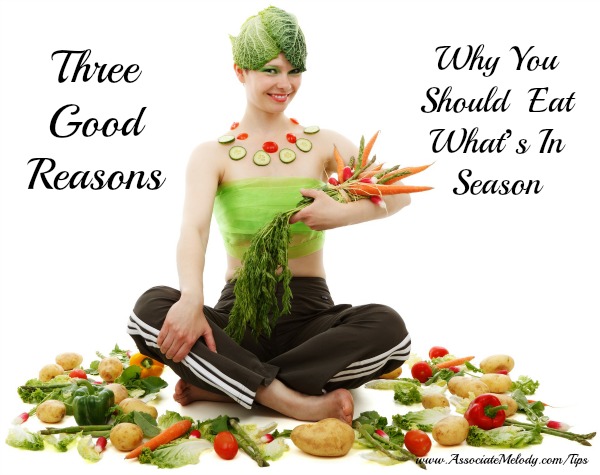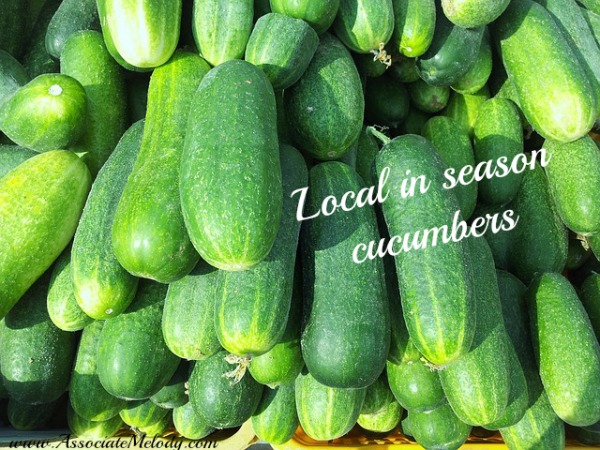3 Good Reasons Why You Should Eat What’s In Season
We eat a lot of fresh local produce in the summer and this got me thinking about the benefits to eating seasonal foods. Here’s three good reasons why seasonal food is a better choice for your family.
1. Save Money, seasonal foods are easier on your budget!
One of the best things about seasonal produce is that it is abundant which means it will cost less. Look for local vegetables, fruits and berries at your grocery store, Farmer’s Market or local growers. Growing conditions are optimal and it doesn’t have to be shipped as far. All of these factors combine to produce a fruit or vegetable that costs far less than produce that has to be grown in a greenhouse, with electric lights and synthetic fertilizers taking the place of natural sunlight and soil.
2. Health and nutrition.
Since seasonal produce hasn’t spent as much time in storage as out-of-season produce; it is fresher and contains more nutrients (vitamin C, for example, is lost as the fruit or berries sits in storage). Seasonal food is more likely to be local, and therefore it’s less likely to be covered with preservatives, fungicides and waxes to make the trip from farm to store. If you can find organic produce locally you can avoid the nasty chemicals altogether.
3. Good taste, eating seasonally helps prevent “food fatigue.”
It’s probably not a surprise, when you eat the same foods year-round, you can get tired of them. When you eat what’s in season you and your family can look forward to “asparagus and rhubarb season,” “tomato and peach season” or “pumpkin and squash season” each year, and those foods will taste so much better after months of waiting. They will also taste better in general, since seasonal produce is more flavorful.
Our current favorite in season food is cucumbers, we get them at our Farmer’s Market, our local grocery store and thanks to the generosity of friends who share their garden bounty!
Here is a partial list of produce and what time of year it is considered “in season.” Some produce is available fresh year-round, such as bananas, potatoes, carrots, celery, onions, and kiwi.
- January-February: Broccoli, Brussels sprouts, cabbage (January), cauliflower, grapefruit, kale, leeks, and oranges.
- March-May: Artichokes, asparagus, avocados, beets, Chinese cabbage, cucumbers (April and May) greens, lettuce, okra, parsnips (March) peas, rhubarb, spinach, summer squash (April and May).
- June-September: Apricots, arugula, basil, beans, berries, cherries, grapes, mangoes, melons, peaches (July and August), pears (September), peppers, plums, tomatoes (July and August), wild mushrooms (September).
- October-December: Apples, cranberries, dates, figs (October), kale (November and December), kumquats, mandarin oranges (November and December), pears, star fruit, sweet potatoes, winter squash.
Find out what grows in your area during different times of the year, and enjoy eating seasonally.








28 Sep 2013
I loved this article. Thanks for summing it up so nicely. I agree with you, that the best way to eat fruits and veggies is to follow each season. I´m so happy when I can prepare my pumpkin soup from a fresh pumpkin, harvested just a few minutes before from my garden. I also started to go to picking farms, where can I get the best stuff by myself. And I can also speak to the owners, and control them in a way, if they use some chemicals or not.